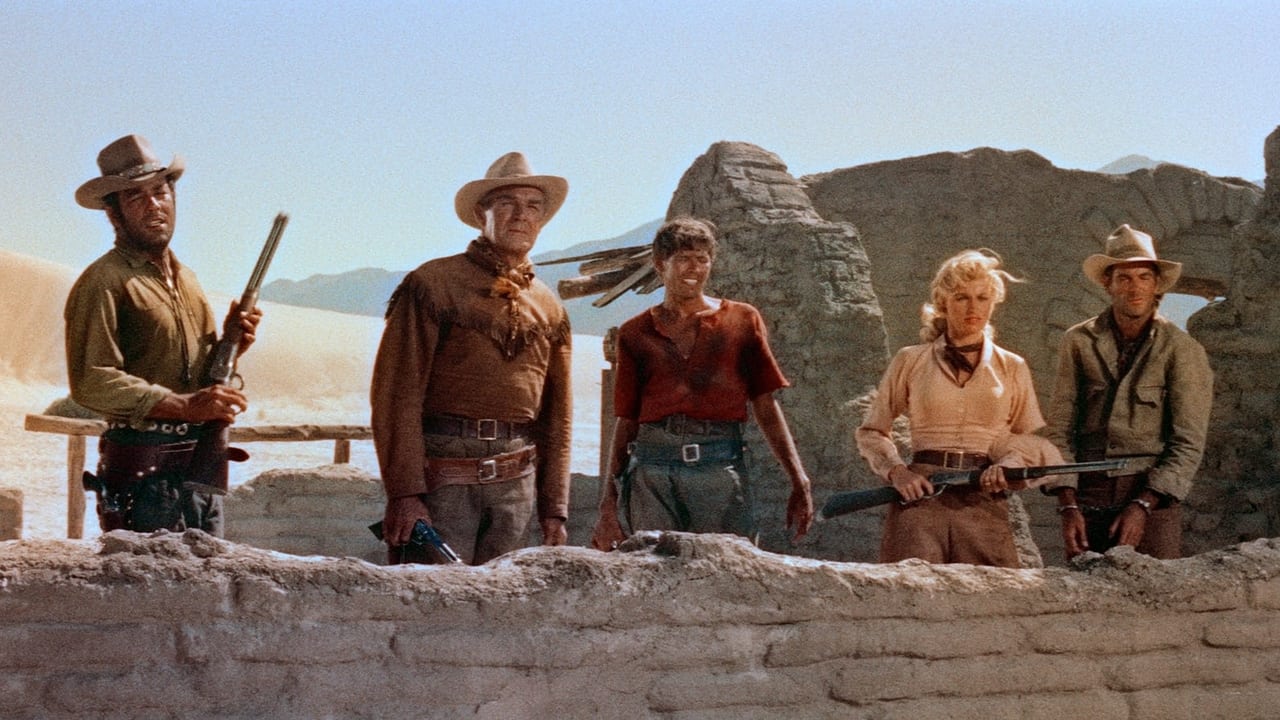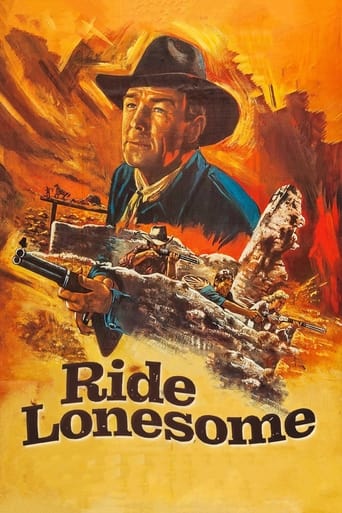

Purely Joyful Movie!
... View MoreExcellent, Without a doubt!!
... View MoreA Brilliant Conflict
... View MoreGreat movie. Not sure what people expected but I found it highly entertaining.
... View MoreThis classic film is one I found out about because it was listed in the book 1001 Movies You Must See Before You Die, the majority of the time I agree with the entries, so I hoped it would be the same with this one, directed by Budd Boetticher (The Cimarron Kid, City Beneath the Sea, The Tall T). Basically Ben Brigade (Randolph Scott) is a bounty hunter, he captures wanted outlaw Billy John (James Best), he intends to take him to Santa Cruz County, Arizona to be hanged. Billy John brags that his fellow outlaw brother Frank (Lee Van Cleef) will not allow him to come to justice, Brigade is not worried, but he allowing the brother to catch up to him. Along the way, Brigade stops at a staging post, he comes to the rescue of Carrie Lane (Karen Steele) during an Indian attack, he is joined during the rescue by new partners, gunmen Sam Boone (Pernell Roberts) and his friend Whit (James Coburn), to continue the journey more safely. Brigade knows that Sam and Whit's arrival is motivated to Billy John for themselves and get the reward for his capture, and Frank is in hot pursuit to stop them. Scott is a good lead, Best has fun as the giggly criminal, and Van Cleef and Coburn are good snarling villains, it is a very simplistic but neatly crafted script, and there is plenty of material to get your attention, including shooting and chase sequences, a worthwhile western. Good!
... View MoreBeautifully-filmed Budd Boetticher outdoor saga, one in a series of westerns the filmmaker produced with star Randolph Scott (usually from a screenplay by writer Burt Kennedy), involves former sheriff-turned-bounty hunter attempting to bring in wanted killer across desolate Arizona terrain, inadvertently coming to the aid of shapely widow whose husband was captured and killed by Indians. Film opens with terrific desert stand-off, but rather quickly lapses into genre clichés with the arrival of two randy gunmen (Pernell Roberts and a debuting James Coburn) paying the lady a hostile visit. Aside from Charles Lawton Jr.'s glorious color cinematography, Randolph Scott's unruffled, low-key charm is really the only thing this routine adventure has going for it. Dialogue scenes are stilted, as is the male camaraderie. ** from ****
... View MoreThe pacing and action in this movie are excellent. Not once did I get the feeling the characters were acting. It drew me in until I almost felt as if I was there with them.It is a great depiction of how harsh and rugged life was in that area during that time frame.I thoroughly enjoyed this movie. All of the people were actors I have appreciated and enjoyed many times. The woman was new to me, but she was reasonably convincing. She did not seem as mature in her acting role as the men, I suspect she is a newcomer, chosen for her looks.Watching this, I found myself wondering why Pernell Roberts didn't end up filling the roles vacated by Randolph Scott's retirement. He seemed poised and confident enough to be a character like Scott. Maybe a bit of research will provide some clues.If you like westerns I am certain you will enjoy this movie.
... View MoreRandolph Scott gives a solid, and somewhat sedated performance , along with an impressive cast in Ride Lonesome. Pernell Roberts has one of the strongest parts in this film, and gives a noteworthy performance also. Soon after this film, he would become a household name as the elder son in the hit television series Bonanza. This is James Coburn's first break in movies and he equally proves to be a very talented actor. Lee Van Cleef and James Best, along with Karen Steele as the spicy widow, help round out the cast in this excellent Budd Boetticher western. The extraordinary use of cinematography, with some of the most amazing landscape ever seen, helps to enhances the four characters in this tight, intense and impressive western. The combining results create a must see film, that belongs in the classic westerns category. I have seen this movie several times, have always enjoyed it and I do not want to give a synopsis of this film. Rather, I encourage the reader to watch and appreciate this fine western story and to judge it for themselves. No doubt, Randolph Scott fans will not be disappointed in what would be one of his most outstanding westerns, to soon close out a very remarkable and successful career.
... View More